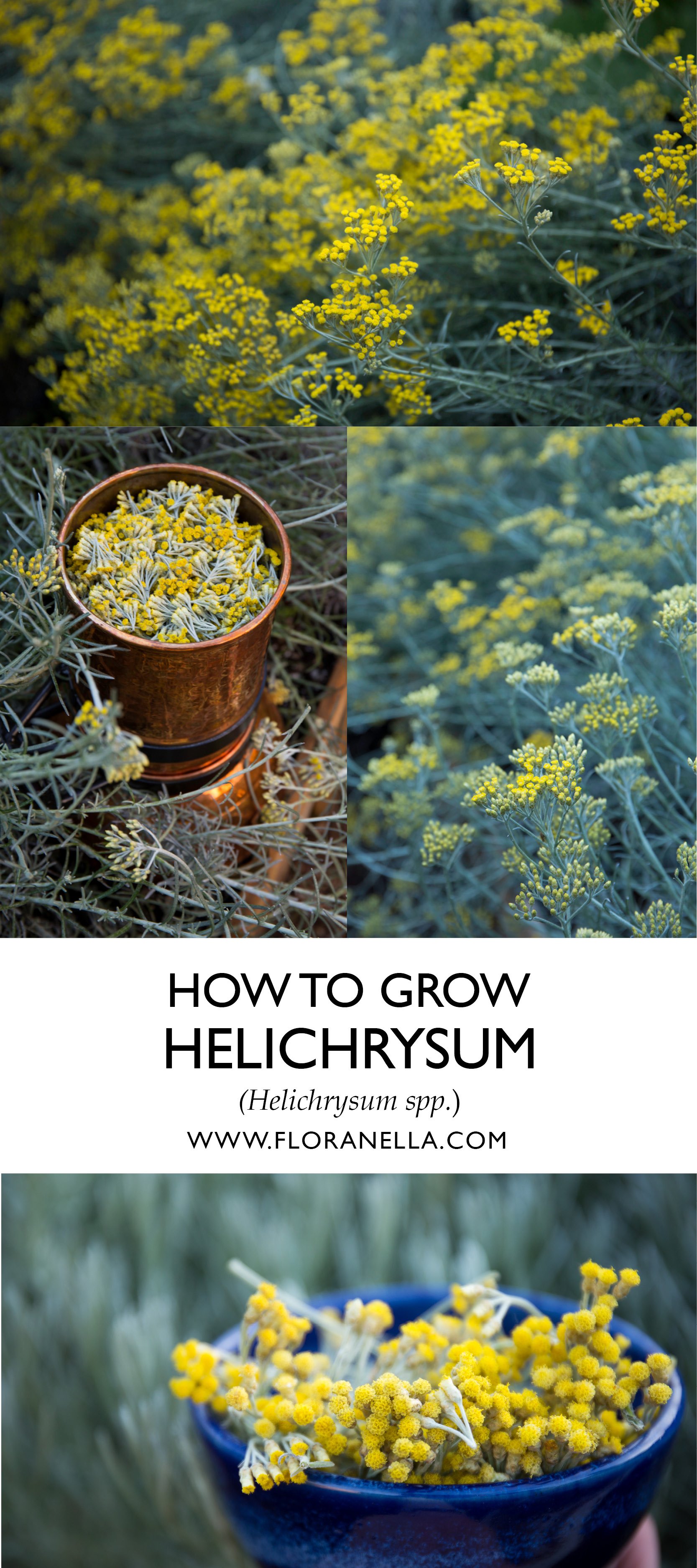How to Grow Helichrysum
This article is part of our “How to Grow Herbs” series. If you would like to learn more about how to work with this plant after you harvest it, please refer to our Herbal Aromatherapy Certification Program™ here.
Helichrysum is one of my favorite herbs to grow (I know I saw this about almost every herb, but it really is true!). The plants are lovely, they are super aromatic, and having access to them for distillation allows me to gather a truly delightful hydrosol with which I love to work.
There are over 500 species of Helichrysum. Helichrysum italicum is perhaps the most revered and valued in the aromatherapy tradition, though there are other species that are also utilized.
Helichrysum is often called immortelle, everlasting, life everlasting, licorice plant, or curry plant (not the same as curry tree, though helichrysum foliage does smell a lot like curry; it does not taste like it, though, and is not commonly used in food). The plant has earned those first three nicknames because of the way its bracts dry with a papery crispness and retain their color. I have some dried helichrysum flowers that are over five years old and they are still a bright, saturated yellow color! People who work with dried flowers year-round often grow different species of helichrysum to use in their art pieces.
Growth Habit
Helichrysum italicum grows as a beautiful shrub that can be trained into a dome shape reminiscent of lavender’s. It has delicate, fragrant, foliage that has a pretty, gray-blue-green color to it and the plants can grow to be about two feet tall and three feet wide. They do branch out and grow fuller each year as they mature and you will need to prune them annually to keep them looking tidy.
Many helichrysum species are hardy to about a USDA zone 7 and can be grown via surface-sown seeds, divisions, or rooted cuttings.
Growing Conditions
Helichrysum seeds are tiny, light-dependent germinators, so to grow them, you will need to scatter them over the surface of the soil (I prefer to do so in a tray or pot), press them into the soil (but do not cover them), and gently water them in. Keep the tray or pot of seeds evenly moist and under light in a warm place until the seedlings emerge. Once you see several sets of true leaves, you can either pot them up individually to grow them out or transplant them into a protected area in the garden.
Helichrysum plants grow best in full sun and with well-draining soil and regular watering. Ideal growing conditions are similar to what you would use for other Mediterranean plants like lavender or rosemary. In my garden, they usually start flowering by the beginning of June and will flower through the fall season until the first frosts arrive if you continually harvest the flowers to encourage the plant to produce more. They retain their leaves in the wintertime here in my zone 8b neighborhood.
In colder areas, helichrysum can be grown in large containers and brought indoors to be grown with supplemental light in the wintertime. Set the plants back outside in spring.
Learning More
If you would like to learn more about how to work with aromatic plants, I hope you will join me in our Herbal Aromatherapy Certification Program™ here at Floranella! In it, I teach students how to safely and effectively work with over 100 different herbs as well as their applicable essential oils and hydrosols from the garden to the still to the apothecary. I hope to see you in class one day!
About the Author
Hi there, I’m Erin! I am the main instructor here at Floranella. I am a clinical herbalist, aromatherapist, artisan distiller and organic gardener based in the Pacific Northwest. Here at Floranella, I teach people how to work with plants safely and effectively from the garden to the apothecary. Thanks for being here! I’m glad you stopped by.







